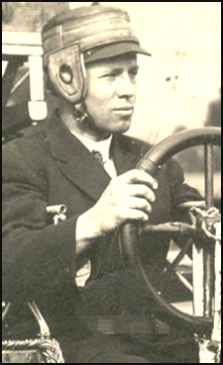
1884-1914 |
 |
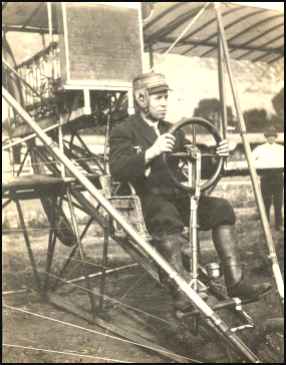 |
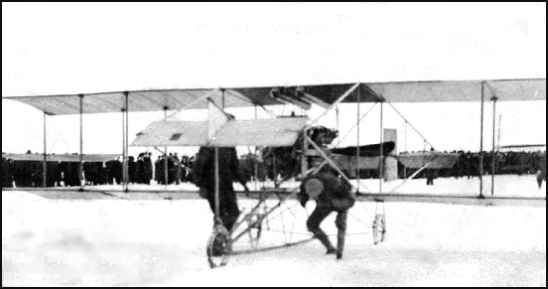 |
|
of Reinhardt N. Ausmus - starting in 1910 His description of Weldon Cooke's career is extracted from a booklet which Foster Lane had sent to my wife, Jo, when she was writing the book about her father, Walter E. Lees. It contains a transcript of his whole address and many news clippings with many photographs. I can find no record of the publisher. Another pioneer was Weldon B. Cooke, who came here in 1912 from California (Oakland). I would like to cite his history back a little further. In 1911, he flew a plane that was built by a couple of men out there, so he flew it, but the plane went bad. Cooke decided to build a plane of his own, and using a Roberts Motor, made in Sandusky, he broke the altitude record, in January of 1912. He flew a plane of his own design, and then, because he also used Roberts Motors, he again came here and built several planes, down at what was the, the old Lake Erie Dry Dock and Ship Co. (or something like that) located just about where the tower is now, down at Battery Park. He built two planes and for a time he was the same as the rest of us - had to get along as best he could. He used a buggy spring for a shock absorber on a landing gear. He tried it out on the ice, and had fortune and some misfortunes. Among one of his planes was the Irene, built at the old Davis Boat Works, and they were going to try to run a chain in the propeller up high, and in trying this out they found it to be an absolute failure, and Cooke lost money on that. Then he built what was the first inverted engine in an airplane that flew successfully. He took the Roberts Motor, a four-cylinder motor also, built that plane also with a laminated fuselage, and it was very successful. Cooke made himself a lot of money. In the early days of aviation, a plane wouldn't fly very far. You had to ship the plane in crates from one exhibition to another - one for the engine and one for the fuselage, etc. - and then had to set it up again at each place. Cooke had a very, very good plane - he got money to build more planes by doing a lot of barnstorming. Now, barnstorming at that time was really barnstoriming. The early contracts in aviation at that time weren't too tough - first of all, you had to have an airplane - and if the thing wouldn't go up, your contract next year would state that all three wheels had to leave the ground. I can recall a fellow who really pulled off a dandy down at Stark County. His plane was made out of pine with cloth stretched over it. He said he couldn't take off from the track, he wanted to take off in the oval center in the track. Well, during the night this fellow goes to work and builds a mound of dirt up right in the center of the field. He had enough cloth for buoyancy, which just lifted him up and he left the ground for a second. It never flew yet he lived up to the contract. The landing wheels did bounce a couple of inches. He shut the motor off quick, and lived up to the contract, which stated all three wheels must leave the ground. So he got $300 a day for three days; he had hooked them for $900. However, the next fellow that came along got hooked, and that happened to be Cooke. Cooke's contract read that he had to be in the air for at least ten minutes. When Cooke went to take off, he noticed one of the bolts for the controls was missing a nut, so he asked for time. Oh Boy, those old armer boys really gave it to him. They sent a fellow out and said they would have to pull the thing off the race track, and finally one of the fellows got it started. Cooke flew that day, and on the second day he took off just beautifully, but all he got out fo the engine wa a put-put adn that was the end of it. Down she went, right near a celery patch. We started to run - when we got there we saw the plane with the propeller running - it could have broke off and really got somebody. Well, our first thought was to try to find Cooke (in those days the pilot sat way up front) - all of a sudden we saw something way up ahead and there he was. He had jumped and fallen in the mud, but wasn't hurt. So they allowed him to come back two days later and finish. Cooke returned to Sandusky to pick up his old plane that he had brought from California with him, the Old Flying Dutchman. It was stored at the old Lake Shore Electric, at that time located at the corner of Market and Columbus Ave. Well, in shipping the plane back, Cooke wasn't going to let them have that one because they were holding one of his planes now, for the freight. Cooke left Sandusky. He wanted to make a little more money so he flew out ot Pueblo, Colorado. There were a lot of air pockets in that particular vicinity, and we didn't know too much about such things at that time. He was on a vertical bank and never got straightened out, and was killed. Cooke had promised his mother he would stop flying, just before he was killed in the crash at Pueblo, Colorado, September 6, 1914. Cooke was a very good man, never used profanity of any kind. Now that was the termination of two great pioneers who did a lot for aviation and helped establish it in Sandusky. The records stand and are printed in many places |
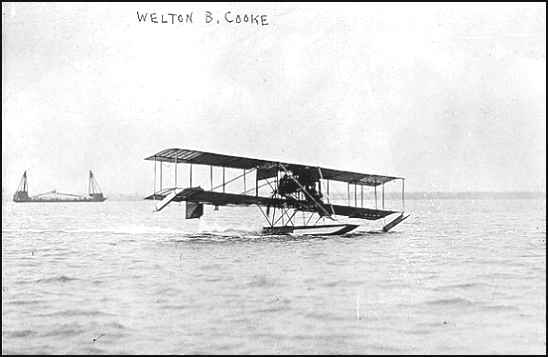 |
Library of Congress Collection, 10-21-07 |
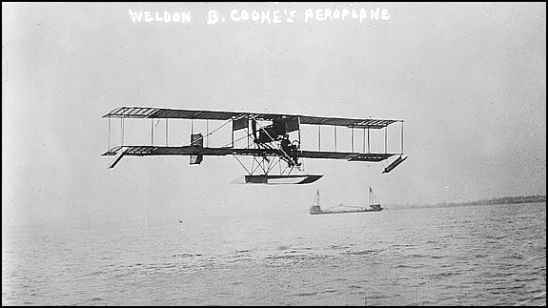 |
Library of Congress Collection, 10-21-07 |
|
in which EB's participated in 1912 The participants were: Blanche Scott (Martin-Curtiss type-Hall Scott 60), P. O. Parmalee (Wright-Hall Scott 60), Lincoln Beachey, (Curtiss-Curtiss 80), Hillery Beachey, (Beachey-Hall Scott 40), Glenn L. Martin (Martin-Curtiss type--Curtiss 80), Horace Kearney (Curtiss type), Weldon B. Cooke, (Wiseman II-Hall Scott 60), William Hoff, (Curtiss-Curtiss 60), Farnum Fish, (Wright-Wright 30). The mail-carrying, radio, marriage, and aerial homeymoon projects do not appear to have been carried out, but thills there were. Parmalee's Wright had a muffler for each bank of exhaust ports and the only noise was the whir of the propellers and chain. "Sure-shot" Kearney flew an extra stunt from the field to San Francisco, landing and taking off on Van Ness Avenue. Possessors of other posters are asked to put them in the EB files for the edification of posterity, if any. If too well cherished, loan them for photostating. courtesy of Steve Remington - CollectAir |
|
|
|
This page on the Ohio Memories website offers two very beautiful photographs, contributed by the Rutherford B. Hayes Presidential Center. You can access the site, where you can enjoy and manipulate the photos, by clicking on the title above. If time permits, and if you are not already familiar with the offerings of the Rutherford B. Hayes Presidential Center, I heartily reccommend that you visit it by clicking on the name above. |
|
There is a second entry in which Weldon is mentioned. It also has a picture of the Noonan-Wiseman 1911 plane, which Weldon purchased and flew. You can visit that reference by clicking on: |
|
Origin, Operation, Obscurity and Legacy - 1891 to 1916 |
|
|
|
If you have any more information on this Early Bird, please contact me. E-mail to Ralph Cooper Back 

|